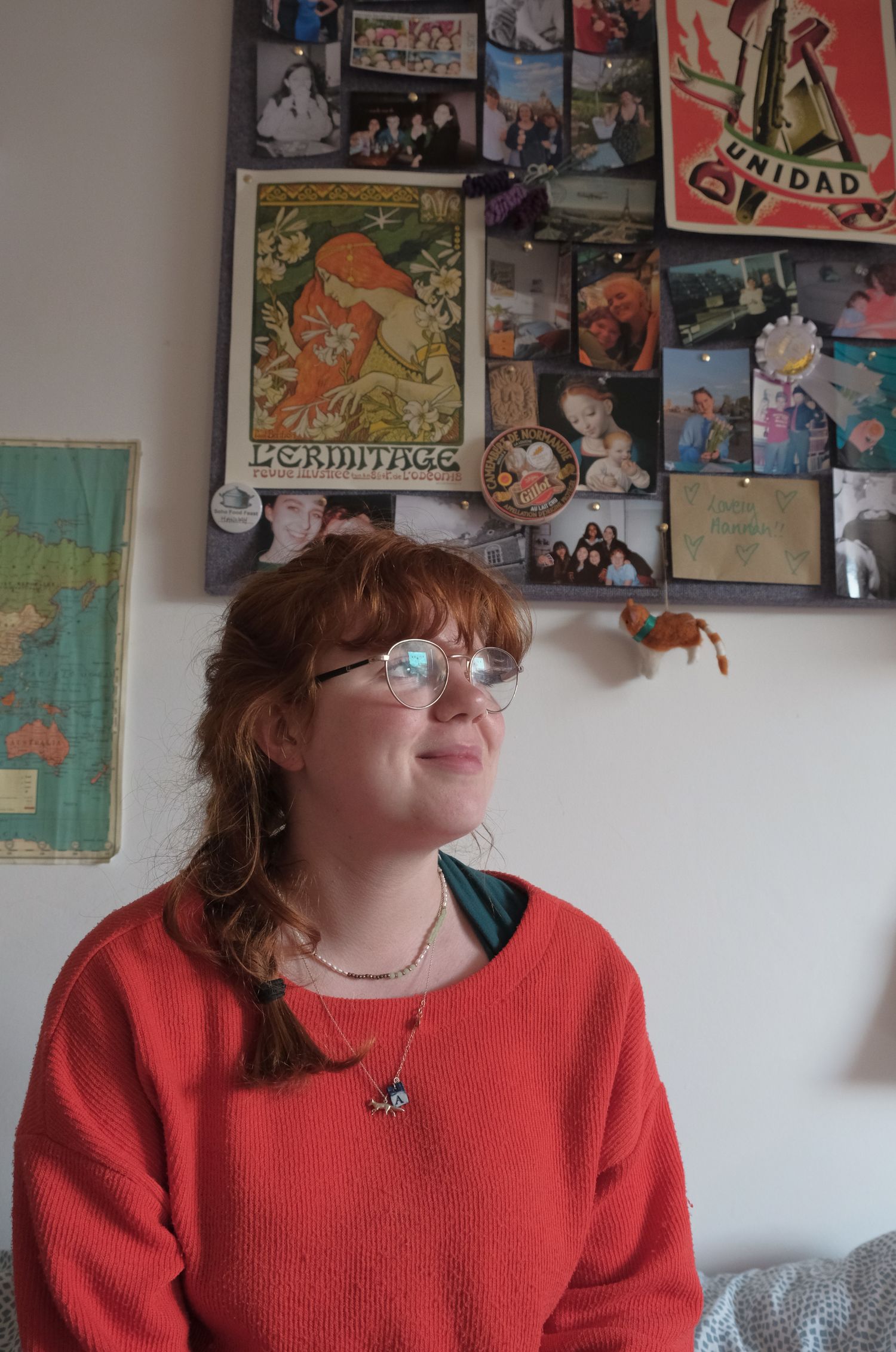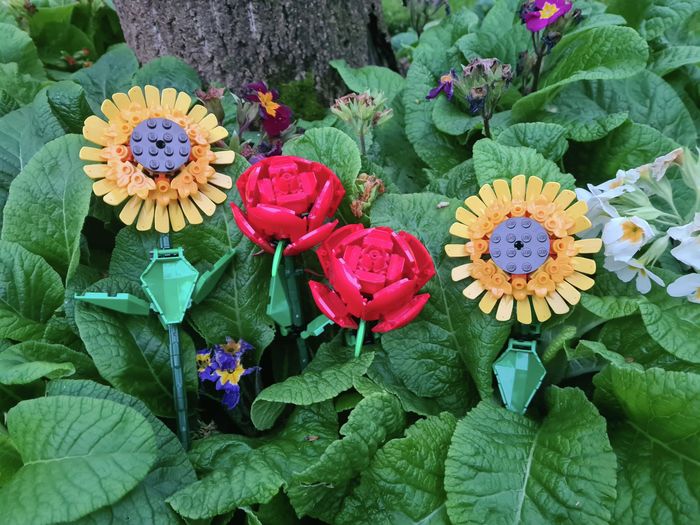Whether copy and paste clinical feeling shoeboxes or sprawling Victorian suites tied together haphazardly by clunky furniture, I believe there is art to be found in our living spaces. Pinboards become galleries: pieces of people’s stories, carefully curated to add a sense of familiarity to an initially alien space. Mantelpieces transform into miniature greenhouses. Shelves are libraries, stuffed with books we packed with the unwavering optimism of a pre-term student, promising ourselves this will be the term we read more than just our supervision lists. Art is not found solely in public galleries, but can also be closer to home. Ruled by blue tac bans, I think the hidden art in Cambridge is found where people turn boxes into something more beautiful.
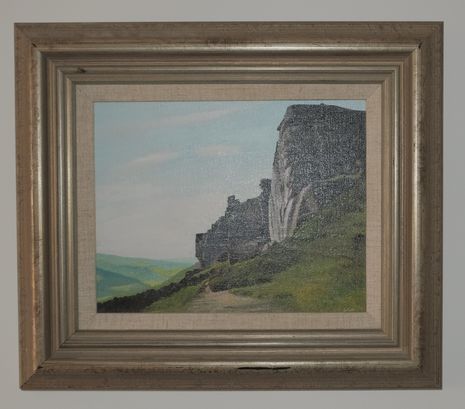
“I’m aggressively sentimental”, Hannah tells me, as she leads the way up winding spirals of brutalist red brick, pointing out the distinctly naval feel to the accommodation. The exterior of the building is a sharp contrast to the warmth and life of her room. I’m struck by how homely it is. It doesn't just feel like a fleeting residence, but something more permanent, more solid - a hard feat when the walls have to be stripped bare every eight weeks.
“Every object has a story”
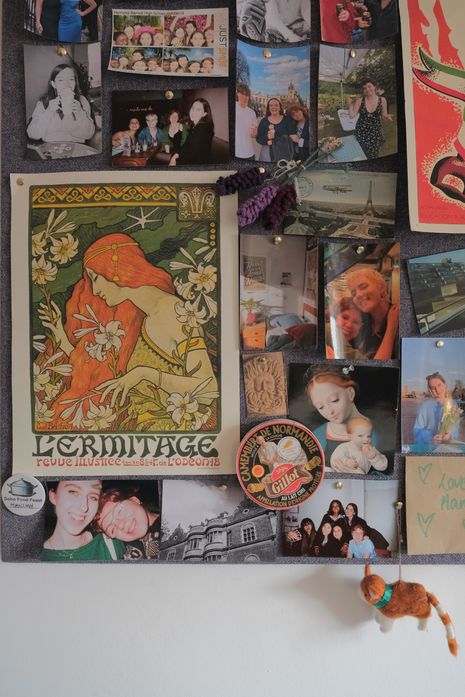
There is a richness to Hannah’s room: every object has a story, from the crocheted lavender that sits pride of place on her pinboard, reminding her of the lavender fields at her secondary school, to the surplus roof tile from the home of a friend she visits every summer with a painting of the same house on it, rendered in the warm summer tedium. Pulling in an entire solar system, a crocheted garland of moons and suns is suspended from the bay window, and strings of stars from the Catz winter ball ripple beside her bed. Even the seemingly meaningless - a calendar of old rail posters from Waterstones - has a story, as Hannah confesses her love for old travel posters. “I think it’s interesting to think about how posters represent an almost utopia - utopia presented as realism.” And maybe that’s what our rooms are: an advertisement for the best bits of ourselves.
By her bed hangs a 20th century map, date unknown. Hannah explains it’s “like a weird little challenge” - she prohibits herself from researching anything, but tries to work it out by studying its intricacies and calling on others. Hannah’s fascination with maps feels fitting when every wall of her room appears to chart another part of her life. The Le Voyage de Babar poster above her desk is a nod to her youth - “my whole childhood was reading Babar”. The art deco candlestick holders, gifted by her university friends for her 20th birthday, ground her room in the present, and a ginger felt cat suspended from her pinboard, a 19th birthday present from a school friend’s mum, reflects somewhere in between.
“Lying in the rubble of your own life”
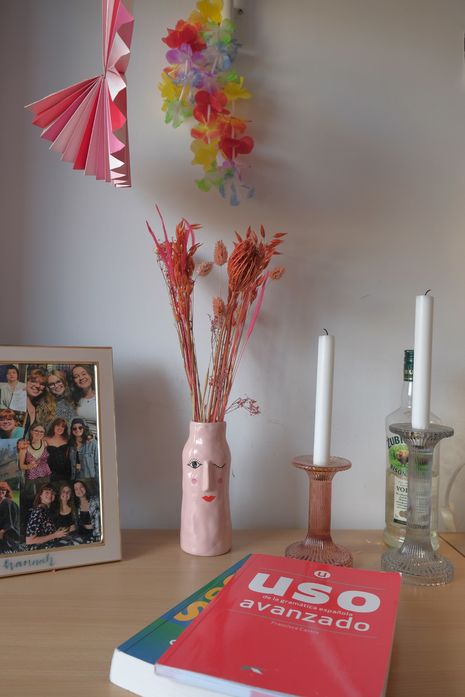
Curious, I ask Hannah: if her room was an exhibition in a gallery, what would its title be? After a moment’s reflection she responds with assuredness: “Dust and Chips”, a quote from one of her favourite novels - “when you brush off the dust and chips of your life what is left?” She describes her room as “lying in the rubble of your own life”. I find myself unable to shake the poetic-ness of this description; maybe our rooms shouldn’t be the product of intentional curation, but inviting the pieces of ourselves in, in whatever form that may be.
“Hannah’s room stands in defiant opposition, rebuking this aestheticized minimalism”
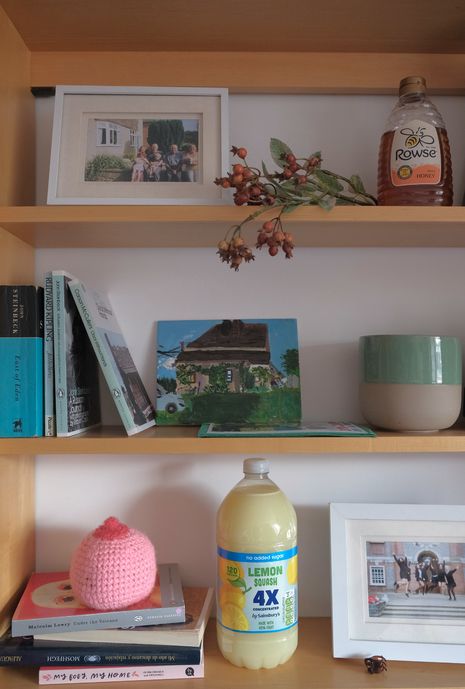
William Morris believed you should “have nothing in your houses that you do not know to be useful or believe to be beautiful.” While the useful is stashed out of site - with Hannah admitting “I hide the ugly parts” and keeping her shoes concealed beneath her bed - there is a lot that is certainly beautiful. I think we’re too conditioned into an aversion to complexity, to avoid the “dust and chips”. Pinterest calls on us to streamline everything into complementary shades of beige, everything seems to shriek about optimisation and efficiency, the dreaded calls for productivity that pervade everyday life. Hannah’s room stands in defiant opposition, rebuking this aestheticized minimalism, embracing the beauty of the wonderful and eclectic: the pirate hats on lamps that feel like “dentists’ surgeries” and the broken jugs from a French brocante which she acknowledges “a lot of people would think was tat.”
“What is there without the ticket stubs from Brighton pier and photographs of May week?”
Explaining her brother’s dislike for her interior design choices, she reveals he would describe it as “cluttered” - but while every surface is adorned with a cushion or ceramic, is that such a bad thing? Because what is there without the ticket stubs from Brighton pier and photographs of May week? When it comes to our rooms, perhaps we could all do with a little less ruthlessness and a bit more rubble.

